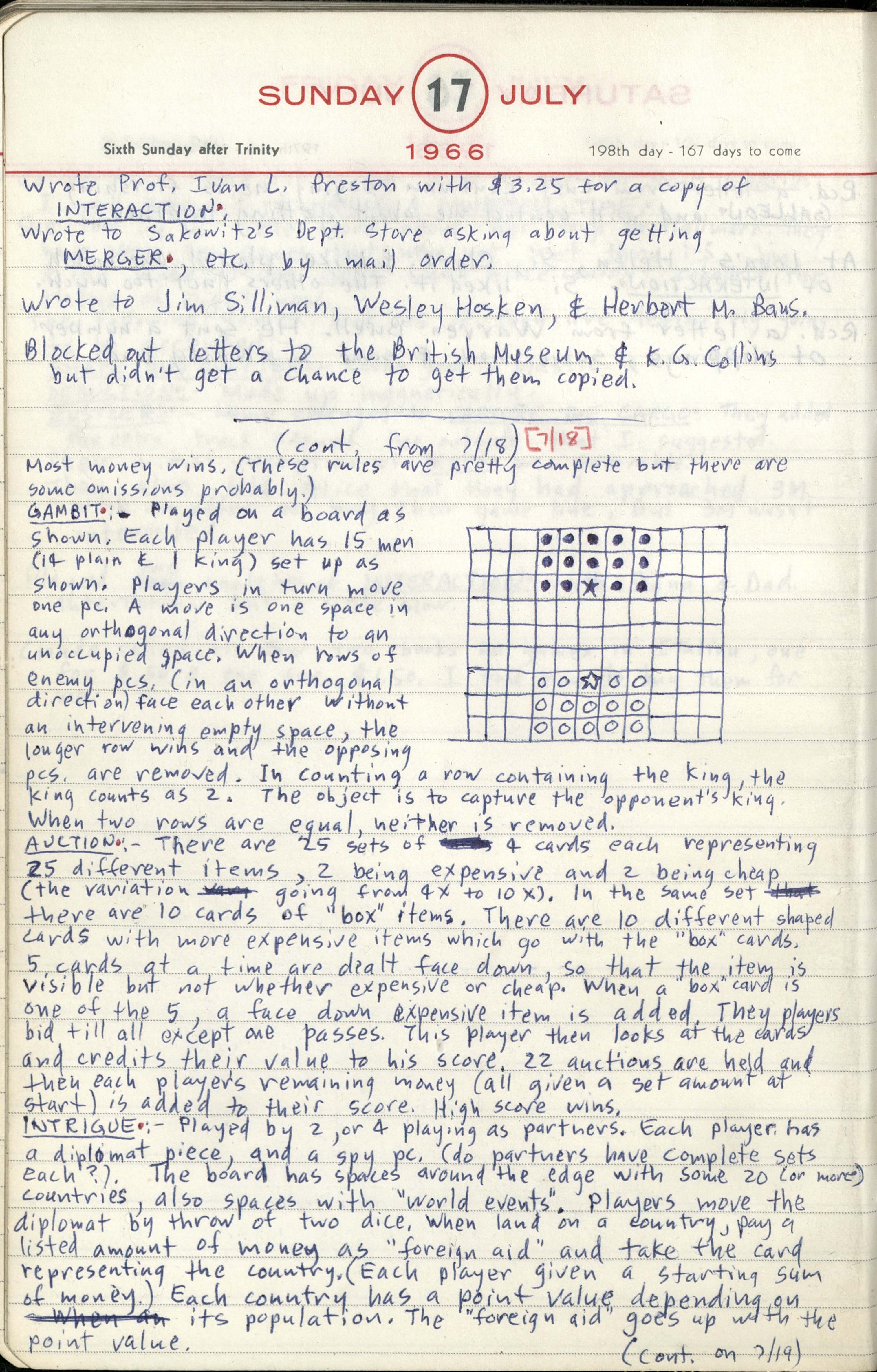1966_Sackson_218_July 17.jpg: Page #1
Original title: 1966_Sackson_218_July 17.jpg

Transcription
SUNDAY 17 JULY Sixth Sunday after Trinity 1966 198th day - 167 days to come
Wrote Prof. Ivan L. Preston with $3.25 for a copy of INTERACTION.
Wrote to Sakowitz's Dept. Store asking about getting MERGER, etc. by mail order.
Wrote to Jim Silliman, Wesley Hosken, & Herbert M. Baus [?].
Blocked out letters to the British Museum & K.G. Collins but didn't get a chance to get them copied.
(cont. from 7/18) [7/18] Most money wins. (These rules are pretty complete but there are some omissions probably.) GAMBIT: - Played on a board as shown. Each player has 15 men (14 plain & 1 king) set up as shown. Players in turn move one pc. A move is one space in any orthagonal direction to an unoccupied space. When rows of enemy pcs. (in an orthagonal direction) face each other without an intervening empty space, the longer row wins and the opposing pcs. are removed. In counting a row containing the king, the king counts as 2. The object is to capture the opponent's king. When two rows are equal, neither is removed.
[diagram to right of GAMBIT description: 11 x 9 grid, with top center 6 x 3 marked with black circles (one star), bottom center 6 x 3 marked with white circles (one star).]
AUCTION:- There are 25 sets of cards 4 cards each representing
25 different items, 2 being expensive and 2 being cheap
(the variation vary going from 4x to 10x). In the same set that
there are 10 cards of "box" items. There are 10 different shaped
cards with more expensive items which go with the "box" cards.
5 cards at a time are dealt face down, so that the item is
visible but not whether expensive or cheap. When a "box" card is
one of the 5, a face down expensive item is added. They players
bid till all except one passes. This player then looks at the cards
and credits their value to his score. 22 auctions are held and
then each player's remaining money (all given a set amount at
start) is added to their score. High score wins.
INTRIGUE:- Played by 2, or 4 playing as partners. Each player has
a diplomat piece, and a spy pc. (do partners have complete sets
each?). The board has spaces around the edge with some 20 (or more)
countries, also spaces with "world events". Players move the
diplomat by throw of two dice. When land on a country, pay a
listed amount of money as "foreign aid" and take the card
representing the country. (Each player given a starting sum
of money.) Each country has a point value depending on
When an its population. The "foreign aid" goes up with the
point value.
(cont. on 7/19)